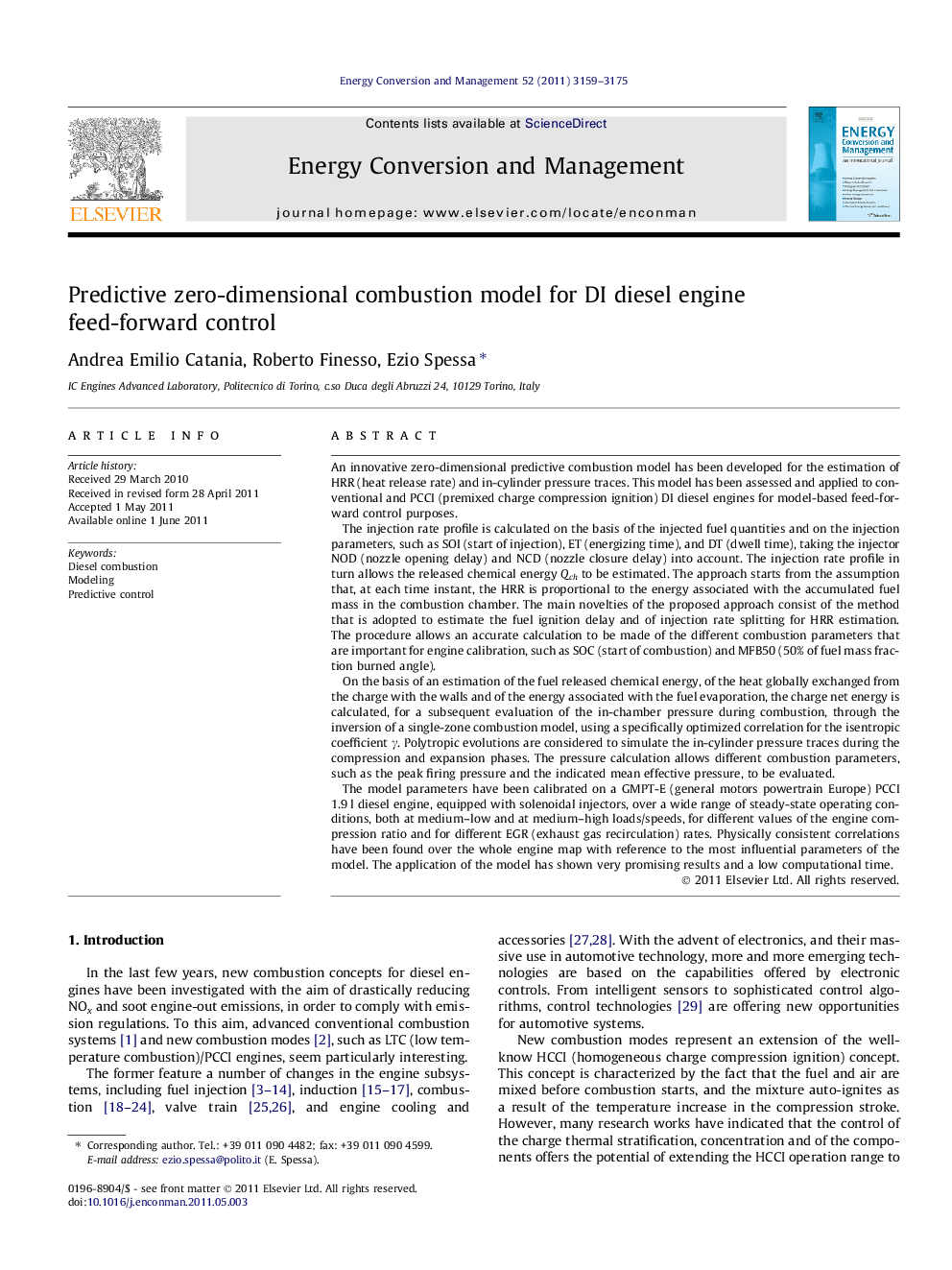| کد مقاله | کد نشریه | سال انتشار | مقاله انگلیسی | نسخه تمام متن |
|---|---|---|---|---|
| 765960 | 897071 | 2011 | 17 صفحه PDF | دانلود رایگان |

An innovative zero-dimensional predictive combustion model has been developed for the estimation of HRR (heat release rate) and in-cylinder pressure traces. This model has been assessed and applied to conventional and PCCI (premixed charge compression ignition) DI diesel engines for model-based feed-forward control purposes.The injection rate profile is calculated on the basis of the injected fuel quantities and on the injection parameters, such as SOI (start of injection), ET (energizing time), and DT (dwell time), taking the injector NOD (nozzle opening delay) and NCD (nozzle closure delay) into account. The injection rate profile in turn allows the released chemical energy Qch to be estimated. The approach starts from the assumption that, at each time instant, the HRR is proportional to the energy associated with the accumulated fuel mass in the combustion chamber. The main novelties of the proposed approach consist of the method that is adopted to estimate the fuel ignition delay and of injection rate splitting for HRR estimation. The procedure allows an accurate calculation to be made of the different combustion parameters that are important for engine calibration, such as SOC (start of combustion) and MFB50 (50% of fuel mass fraction burned angle).On the basis of an estimation of the fuel released chemical energy, of the heat globally exchanged from the charge with the walls and of the energy associated with the fuel evaporation, the charge net energy is calculated, for a subsequent evaluation of the in-chamber pressure during combustion, through the inversion of a single-zone combustion model, using a specifically optimized correlation for the isentropic coefficient γ. Polytropic evolutions are considered to simulate the in-cylinder pressure traces during the compression and expansion phases. The pressure calculation allows different combustion parameters, such as the peak firing pressure and the indicated mean effective pressure, to be evaluated.The model parameters have been calibrated on a GMPT-E (general motors powertrain Europe) PCCI 1.9 l diesel engine, equipped with solenoidal injectors, over a wide range of steady-state operating conditions, both at medium–low and at medium–high loads/speeds, for different values of the engine compression ratio and for different EGR (exhaust gas recirculation) rates. Physically consistent correlations have been found over the whole engine map with reference to the most influential parameters of the model. The application of the model has shown very promising results and a low computational time.
► Zero-dimensional low-throughput combustion model for real-time control in diesel engine applications.
► Feed-forward control of MFB50, pmax and IMEP in both conventional and PCCI combustion modes.
► Capability of resolving the contribution to HRR of each injection pulse in multiple injection schedule.
► Ignition delay and model parameters estimated through physically consistent and easy-to-tune correlations.
Journal: Energy Conversion and Management - Volume 52, Issue 10, September 2011, Pages 3159–3175